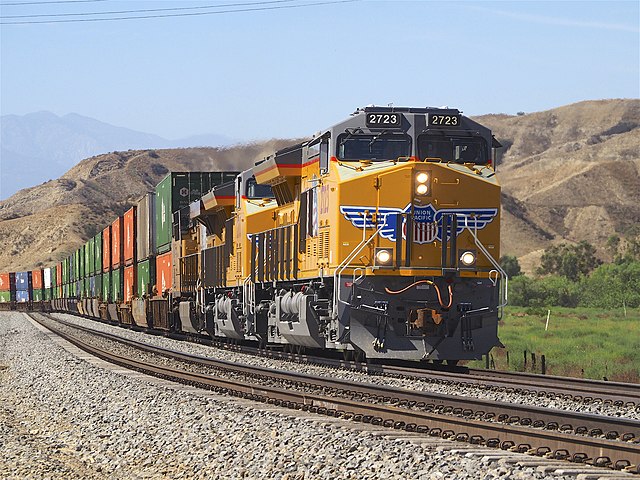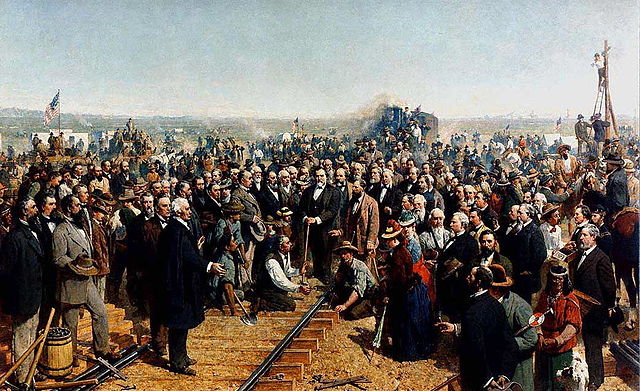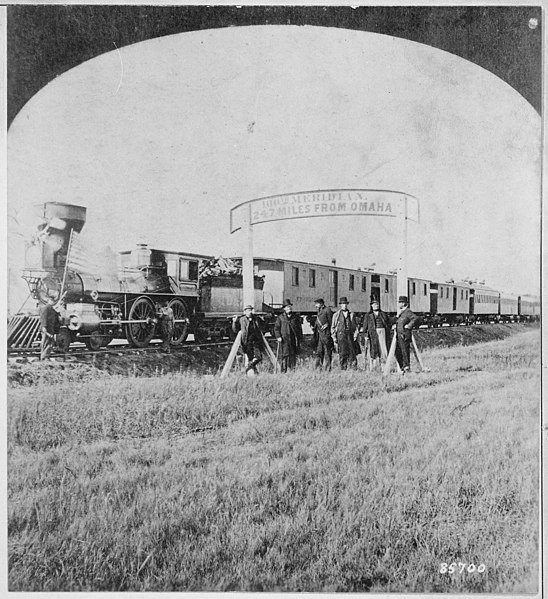Overland Route (Union Pacific Railroad)
The Overland Route was a train route operated jointly by the Union Pacific Railroad and the Central Pacific Railroad/Southern Pacific Railroad, between the eastern termini of Council Bluffs, Iowa, and Omaha, Nebraska, and the San Francisco Bay Area, over the grade of the first transcontinental railroad which opened on May 10, 1869. Passenger trains that operated over the line included the Overland Flyer, later renamed the Overland Limited, which also included a connection to Chicago.
The Overland Limited leaving 16th Street station (Oakland), in 1906
Display ads for the CPRR and UPRR the week the rails were joined on May 10, 1869
The Overland's SF ticket office at the Palace Hotel
Donner Lake (left) and the now abandoned original CPRR (later SPRR) Track #1 grade over Donner Pass
The Union Pacific Railroad is a Class I freight-hauling railroad that operates 8,300 locomotives over 32,200 miles (51,800 km) routes in 23 U.S. states west of Chicago and New Orleans. Union Pacific is the second largest railroad in the United States after BNSF, with which it shares a duopoly on transcontinental freight rail lines in the Western, Midwestern and West South Central United States.
UP 2723 leading a train eastbound near inland California.
The Last Spike, by Thomas Hill (1881)
Directors of the Union Pacific Railroad gather on the 100th meridian, which later became Cozad, Nebraska, about 250 miles (400 km) west of Omaha in the Nebraska Territory, in October 1866. The train in the background awaits the party of Eastern capitalists, newspapermen, and other prominent figures invited by the railroad executives.
Intermodal terminal just outside Santa Teresa, New Mexico, used for exchanging freight with trucks from Mexico








